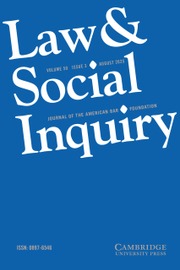No CrossRef data available.
Article contents
The Classroom and the Yard: The Contrasting Context of Prison Higher Education and Its Role in Racial Bias Mitigation
Published online by Cambridge University Press: 01 July 2025
Abstract
Prison has long been recognized as a racialized institution in America, where race determines myriad aspects of life—from where individuals sleep to those with whom they live, eat, and socialize during incarceration. However, there is little evidence on how to effectively remediate prisons’ deep racial divisions—a question that is imperative given that interracial animus in prisons can be both a result and a determinant of racial conflict and violence. In this study, we argue that higher education in prison has significant potential to improve racial attitudes and foster racial integration by providing a “contrasting context” for interracial interaction in the classroom within an otherwise racially segregated institution. Using administrative data on college-level course completion, an original longitudinal survey of prison college students, and in-depth qualitative interviews with prison college alumni, we show evidence of shifts in racial attitudes and self-reported behavior as students move through their college career. Our results demonstrate the potential for prison higher education to shift race-based norms and offer a framework through which to analyze prison education that prioritizes outcomes of interest beyond recidivism.
Information
- Type
- Articles
- Information
- Copyright
- © The Author(s), 2025. Published by Cambridge University Press on behalf of American Bar Foundation

